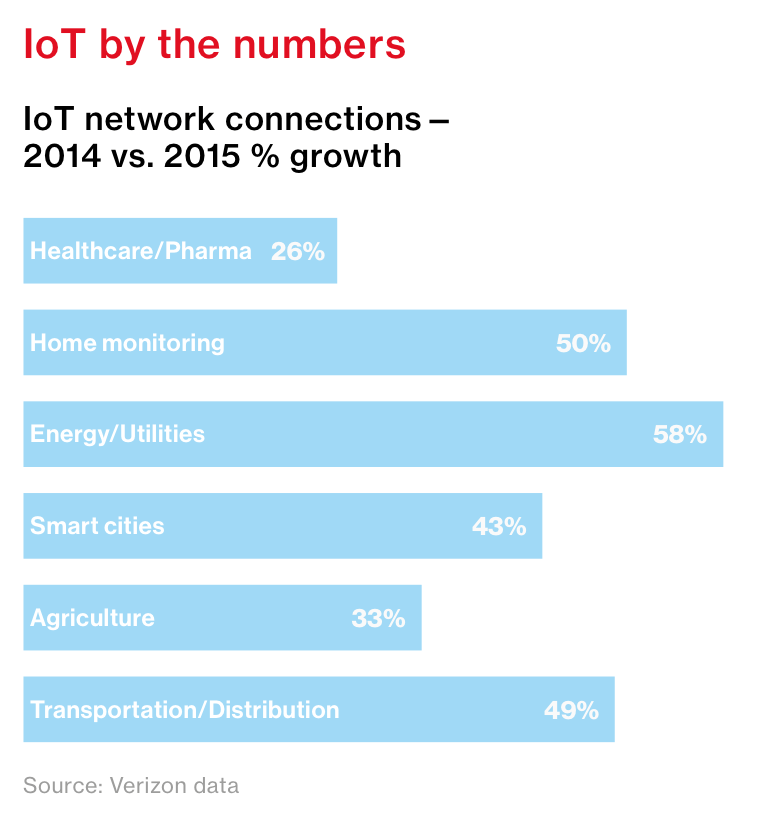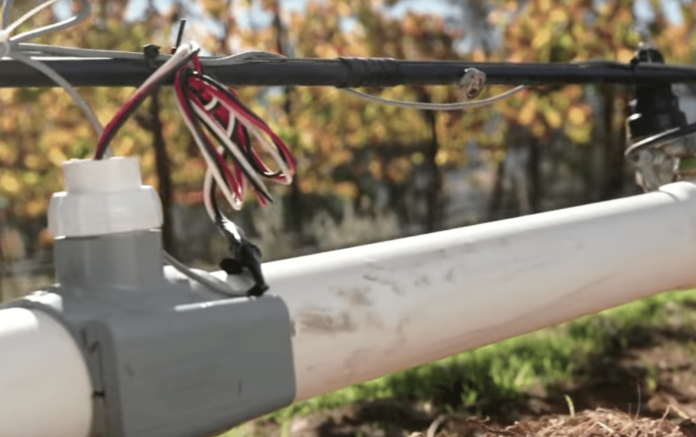Internet of Things adoption drivers, vertical markets, use cases and more highlighted in new Verizon report
The “Internet of Things,” which promises to add connectivity and intelligence to billions of machines and objects, presents an enormous business opportunity for carriers as new vertical applications are enabled. Verizon Communications, which is poised to leverage its massive network infrastructure to support IoT, issued a new report detailing key market trends, use cases and business opportunities.
Based on internal data, Verizon detailed year-over-year connection growth by vertical. The energy/utility sector saw the largest growth, followed by transportation/distribution, home monitoring, smart cities, agriculture and, bringing up the rear, health care/pharmaceutical.

“In our view, 2015 was the year IoT gained legitimacy,” Verizon noted. “Businesses budged off a ‘start small think big’ mindset. Today, they’re building IoT into future strategies and business models. Companies across all industries now have IoT squarely on their radar. The worldwide ‘Internet of Things’ market spend will grow from $591.7 billion in 2014, to $1.3 trillion in 2019, with a compound annual growth rate of 17%. The installed base of IoT endpoints will grow from 9.7 billion in 2014, to more than 25.6 billion in 2019, hitting 30 billion in 2021.”
Verizon identified four “key trends” impacting the space:
- Data monetization: “Nearly 50% of businesses expect to be using more than 25% of their data over the next two to three years. In order to monetize their data by creating and bringing new products and services to market faster, businesses will evolve from descriptive data collection to prescriptive data analytics.”
- Startups fueling growth: “In 2015, enterprise IoT startup companies outpaced funding for consumer startup companies by 75%.” Verizon’s experts say enterprise IoT startup companies will raise two- to three-times more in capital in 2016, compared to consumer IoT counterparts.
- Regulatory compliance: “As technologies like [radio-frequency identification] reach their limit, regulatory compliance has become one of the key driving factors for IoT adoption in industries like food, health care and transportation that need to closely track and act upon data across the entire supply chain.”
- Mass customization: “Network connectivity, low power devices and IoT platforms like Verizon’s ThingSpace are radically simplifying and democraticizing the process of building and bringing new apps to market, invoking the early days of smartphone app development.”
Verizon highlighted a number of use cases, including how the Hahn Winery in California is using drones to monitor its grape crop and water consumption in light of drought conditions.
“I think the IoT platform that we’re building, as well as our analytic capability, gives us the ability to understand data and information at multiple scales thereby giving growers and farmers better insight into what’s happening with their crops,” said Ashok Srivastava, chief data scientist at Verizon.
Here’s a video giving an overview of how Hahn Winery is using IoT.
https://youtu.be/DTpd9J8lLao
According to Verizon, the precision agriculture market will be worth an estimated $4.55 billion by 2020.
In summary, the report authors wrote: “Innovation, productivity and value will thrive as private companies and the public sector both come to the inevitable conclusion that IoT is imperative to delivering the integrated, easy to use and sustainable products and services demanded by an increasingly mobile, tech-savvy 21st-century society.”

